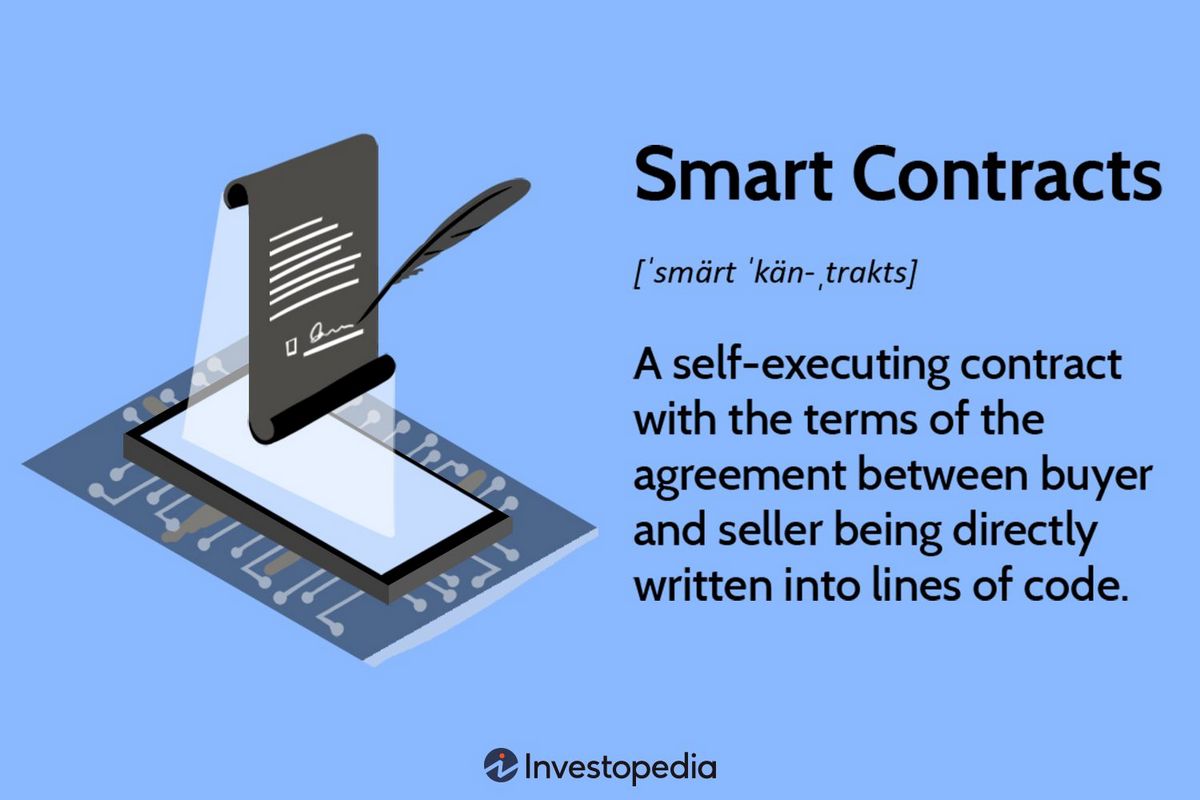What Are Smart Contracts on the Blockchain and How They Work

What Are Smart Contracts on the Blockchain and How They Work
What Is a Smart Contract?
A smart contract is a self-executing program that automates actions in an agreement or contract. Once completed, the transactions are trackable and irreversible.
Smart contracts permit trusted transactions and agreements among disparate, anonymous parties without the need for a central authority, legal system, or external enforcement mechanism.
While blockchain technology has come to be primarily associated with Bitcoin, it has evolved far beyond underpinning a virtual currency.
What You Need to Know
- Smart contracts are scripts that automate the actions specific to a contract between two parties.
- Smart contracts do not contain legal language, terms, or agreements—only code that executes actions when specified conditions are met.
- Nick Szabo, an American computer scientist who invented a virtual currency called "Bit Gold" in 1998, defined smart contracts as computerized transaction protocols that execute the terms of a contract.
History of Smart Contracts
Smart contracts were first proposed in 1994 by Nick Szabo, an American computer scientist who invented a virtual currency called "Bit Gold" in 1998, 10 years before Bitcoin was introduced. Szabo’s predictions in the paper have come true in ways preceding blockchain technology.
Szabo defined smart contracts as computerized transaction protocols that execute the terms of a contract, aiming to extend the functionality of electronic transaction methods to the digital realm.
In his paper, Szabo also proposed executing contracts for synthetic assets, such as derivatives and bonds. He mentioned complex term structures for payments that can now be built into standardized contracts and traded with low transaction costs due to computerized analysis.
Smart contracts contain if/then statements, functions, module imports, and other programming that automate actions specified in a contract. They do not include the legal language or terms of a contract.
Smart Contract Uses
Smart contracts can be used for various purposes, such as ensuring transactions between two parties occur, like the purchase and delivery of goods. They can also be used in real estate transactions, stock and commodity trading, lending, corporate governance, supply chain, dispute resolution, and healthcare.
Smart Contract Pros and Cons
The primary benefit of smart contracts is removing the need for third parties. Other benefits include efficiency, accuracy, and immutability. However, they have drawbacks, such as being permanent and relying on the programmer to ensure the code addresses the contract’s terms, potentially allowing for contracts to be executed in bad faith.
What Is an Example of a Smart Contract?
A simple example of a smart contract is a transaction between a consumer and a business where a sale is made. The contract executes the customer’s payment and the business’s shipment or transfer of ownership.
What Blockchain Has Smart Contracts?
Ethereum has smart contract capabilities inherent to its blockchain. The Bitcoin blockchain also received smart contract abilities after its Taproot upgrade.
What Are Smart Contracts in Simple Terms?
Smart contracts are apps on a blockchain that make each side of a transaction complete its part. For example, a smart contract could initiate a fund transfer with a third party to verify that the transfer took place.
The Bottom Line
Smart contracts are code written into a blockchain that executes the terms of an agreement or contract. They automate the actions that would otherwise be completed by the parties involved, removing the need for trust between them.
Smart contracts are code written into a blockchain that executes the terms of an agreement or contract. They automate the actions that would otherwise be completed by the parties involved, removing the need for trust between them.



